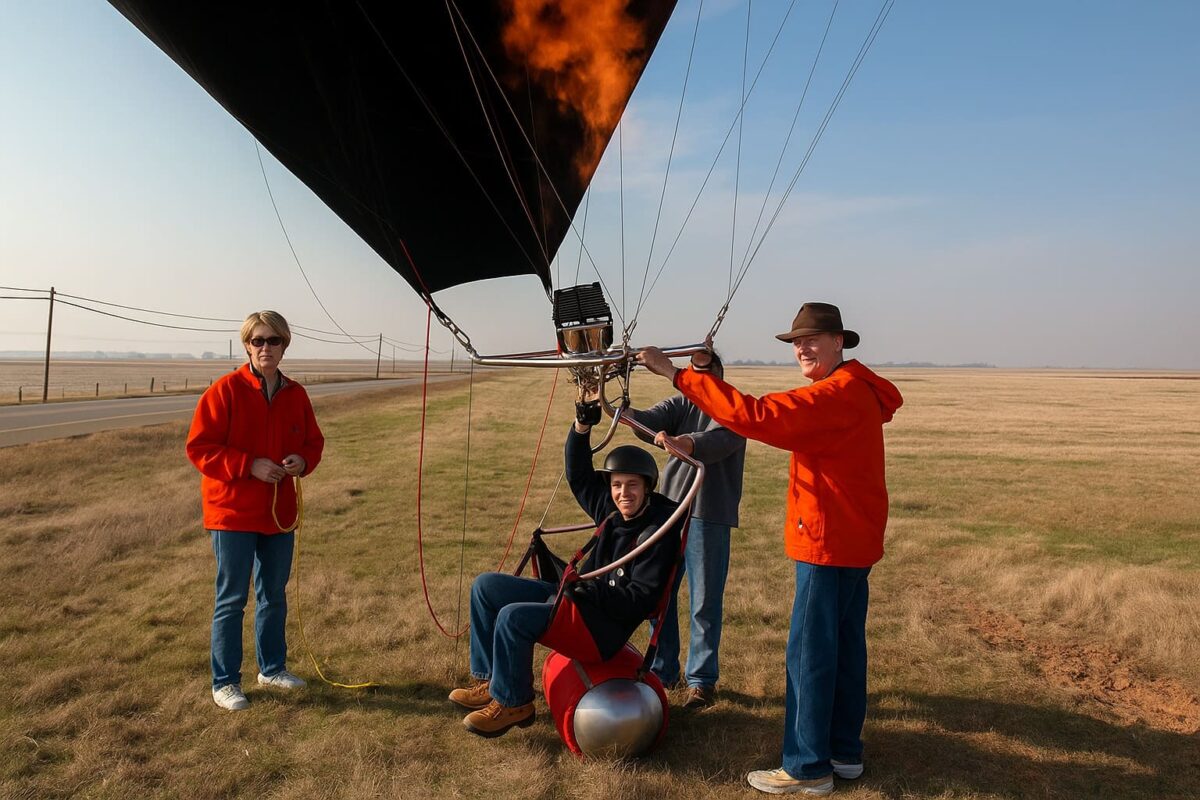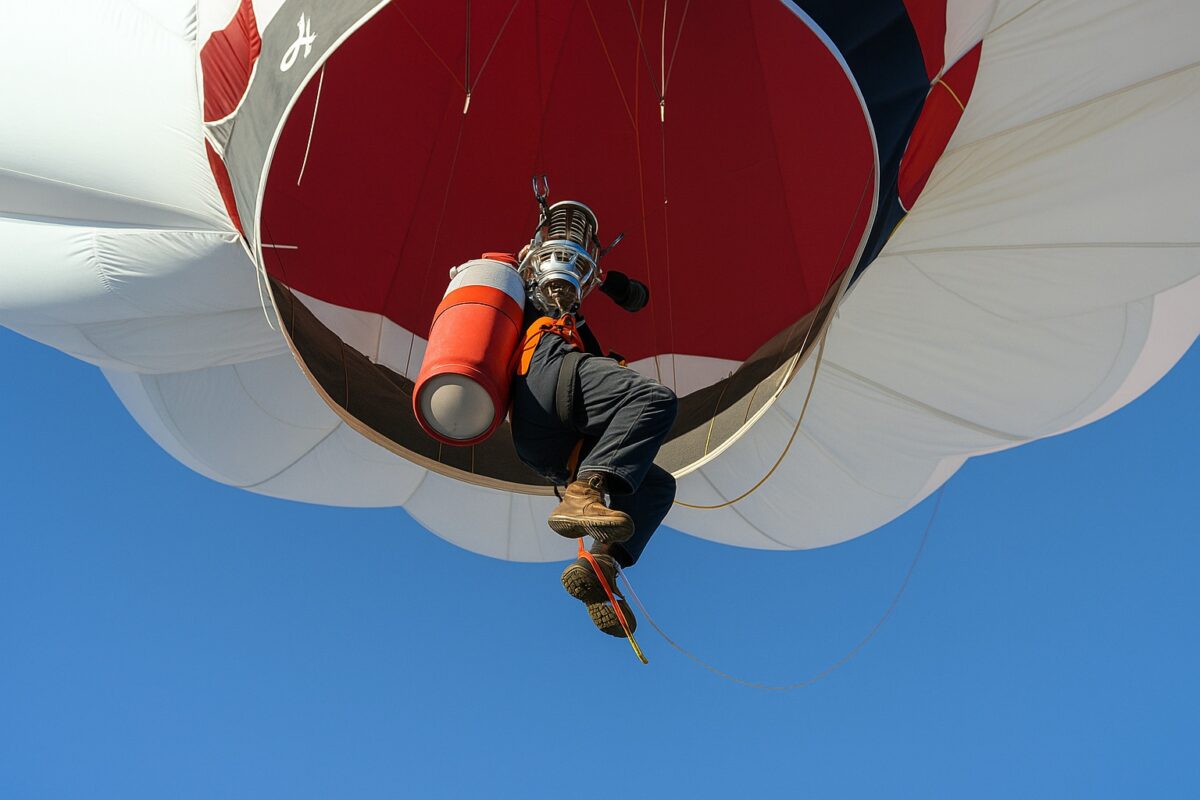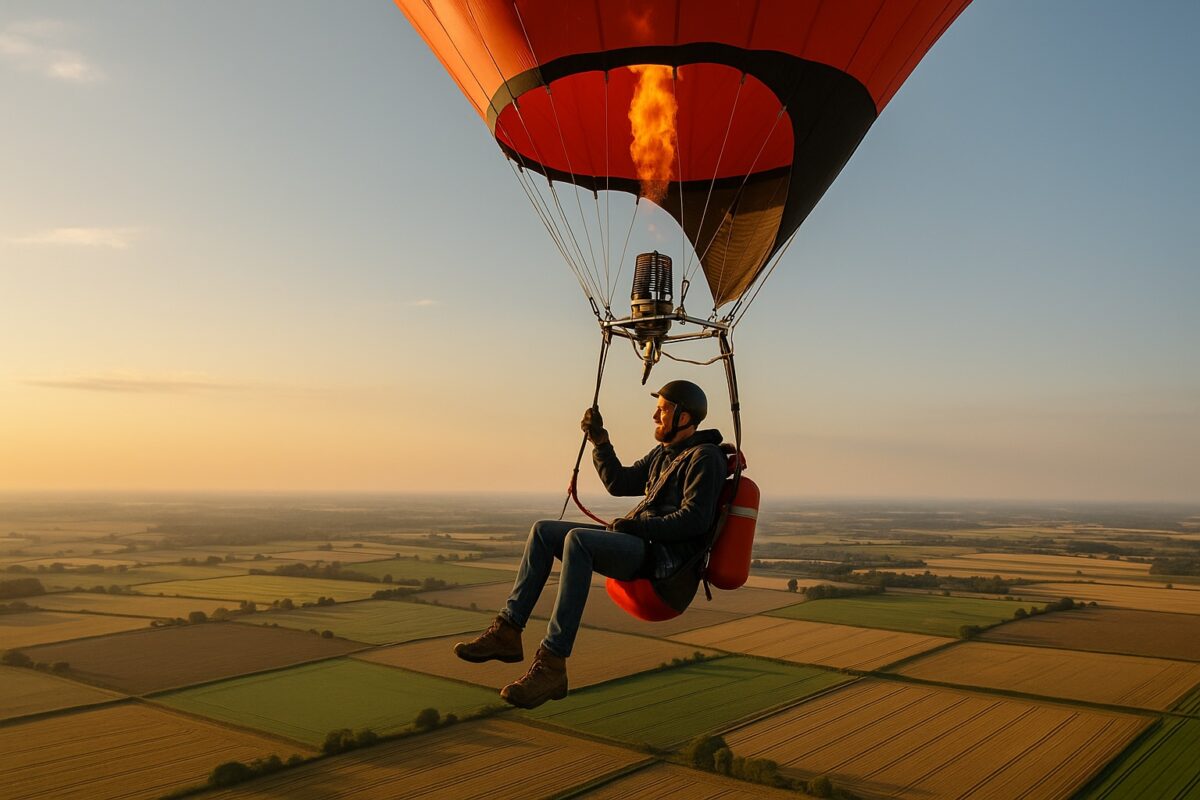Introduction
The first Cloudhopper flight by pilot Kyle Miller of Roseville, California, demonstrates how a single-person hot-air balloon performs under controlled conditions. The flight, conducted under the supervision of instructor Gary Rominger, illustrates the design, responsiveness, and efficiency of a lightweight balloon system known as Rosebud.
Background and Preparation
Kyle Miller developed an early interest in Cloudhoppers after observing one at the WHAMOBASS event. The design’s simplicity and compact structure inspired further study. When Gary Rominger purchased a Cloudhopper in mid-2003, the opportunity arose to examine the aircraft closely and later conduct test flights.
The first setup took place at a residential location. The inflator fan filled the envelope with cold air, revealing a bright, patchwork-style design. Although nearby obstacles prevented a full hot inflation, the test confirmed the ease of setup and demonstrated the efficiency of the small envelope, which could be lifted by one person. This initial observation encouraged further evaluation under flight conditions.
Tethered Flight at the Fairgrounds
The first operational test occurred at the Yolo County Fairgrounds during stable weather. Miller joined Rominger’s crew to assist in a tethered evaluation. A 100-foot line secured the system to the ground while providing space for maneuvering.

Rominger completed several short ascents before inviting Miller to operate the system. Once secured in the harness, Miller performed controlled burns and short lifts. The Cloudhopper responded immediately to burner input, a contrast to the delay often observed in larger hot-air balloons.
Landings were smooth, with impact absorbed through the knees. As wind speed increased, Rominger concluded the session for safety. Although tethered flight created a “false lift” effect that added complexity, the test provided valuable experience in burner timing and altitude control.
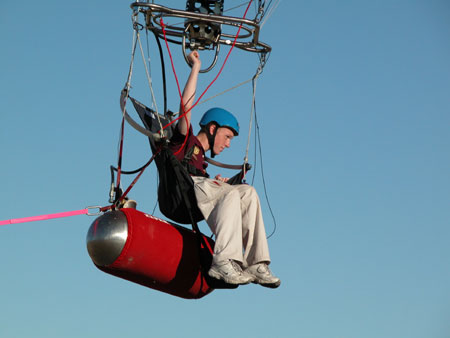
Free Flight and Performance
Four months later, during the Thanksgiving break, conditions were ideal for a free flight. Rominger and Miller selected an open farm field near Roseville for launch. Setup took only minutes, and after standard instrument checks and a preflight briefing, Miller initiated lift-off.
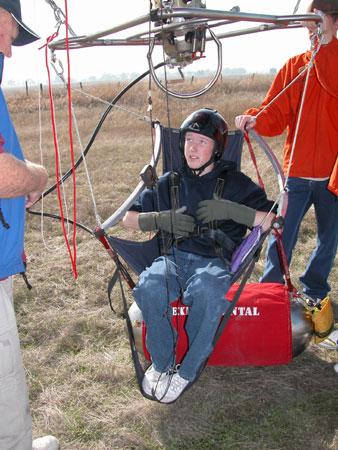

Two moderate burns carried the Cloudhopper to approximately 1,700 feet, climbing at 600 feet per minute. The system required little heat to sustain level flight, maintaining an envelope temperature near 95 degrees Celsius. Turning vents functioned precisely, allowing smooth directional control.
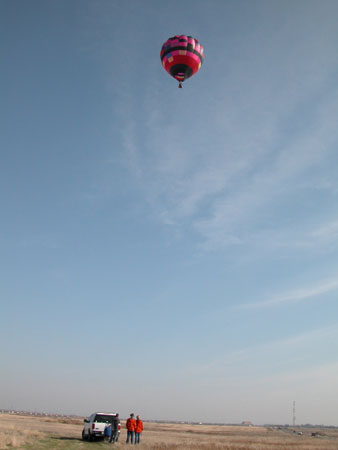
During the flight, Miller tested controlled descents at a rate of about 500 feet per minute. Short, consistent burns stabilized altitude, confirming the Cloudhopper’s responsiveness. The landing sequence ended with light ground contact, aided by leg absorption and proper timing.
Handling and Efficiency
Repeated lift-offs and low-altitude contour flying demonstrated the Cloudhopper’s fine handling. By adjusting burner duration accurately, Miller remained airborne while gliding close to the terrain.
Fuel use proved efficient. A forty-minute flight consumed only about ten percent of the twenty-gallon propane tank. The equipment was lightweight, making post-flight handling simple. The envelope, roughly 31,000 cubic feet in volume, weighed about sixty pounds and could be carried by one person.
Technical Observations
The Cloudhopper displayed excellent control characteristics for a single-seat system. Quick response, minimal delay, and balanced stability allowed safe operation in calm air. The low weight and compact frame required less lift than traditional balloons, while the harness arrangement offered comfort and security.
These combined flights confirmed that Cloudhoppers perform reliably under controlled conditions. Their design allows for short setup time, efficient fuel use, and precise handling. Consequently, the Cloudhopper remains an effective model for solo training, demonstration, and recreational flight.
